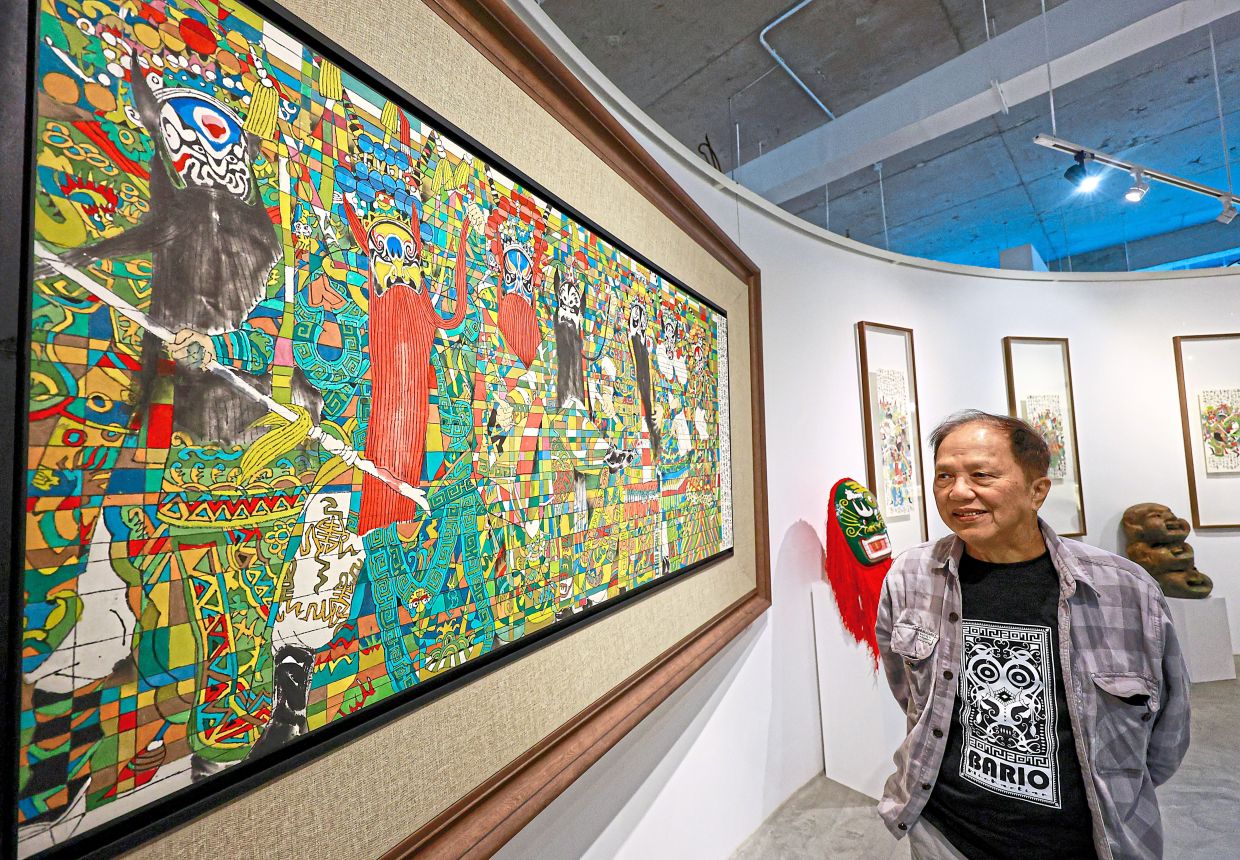ON one wall are sape players in a kaleidoscope of vibrant colours; on another, a couple of rural attap houses, reminding the viewer of old Kuching. Then, there is a tapestry of faces that make up Sarawak.
Five masters are staging a new exhibition in Kota Samarahan, which aims to foster a creative exchange of ideas and inspiration between artists across the South China Sea.
“Through the Canvas, Across the Sea” brings together the five renowned Peninsular Malaysia artists, featuring over 50 of their paintings exploring themes of identity, heritage and cultural landscapes.
The show is organised by Hoan Gallery in collaboration with the Sarawak Tourism, Creative Industry and Performing Arts Ministry from March 21 to April 21.
Hoan Gallery founder Hoan Kee Huang said the exhibition is an opportunity for Sarawak artists to appreciate the works of their counterparts in the peninsula.
“This is a good start for us to get to know each other and to discover paintings from other parts of Malaysia.
“Through their paintings of Sarawak scenes and culture, we can observe different styles and learn from each other in an exchange of artistic creativity,” he said.
The artists featured in the show are Datuk Chong Hon Fatt from Penang, Lee Choon Kooi and Loo Hooi Nam from Kedah, Johor’s Tham Siew Moi and Voon Kim Cheong from Kuala Lumpur, each showcasing their distinctive styles.
“It’s rare for these five masters to appear together and I believe local art lovers are in for a treat,” Hoan added.
“This collaboration underlines our commitment to nurturing creativity and cultural exchange.”
For Voon, Loo and Tham, this is their first time exhibiting their works in Sarawak.
Voon’s semi-abstract compositions depict scenes inspired by Sarawak’s culture, particularly traditional music and dance.
“I love music, so I include musical elements in my work.
“For example, one of my paintings shows a group of sape performers in the forest.
“This piece is called Not Me! Not You! It’s Ours because I want to convey the message of unity and loving nature,” he said.
A musician himself, Voon even composed an original song to accompany the painting.
“I play the guitar, not the sape, but I capture the essence of the sape and Sarawak culture through music.
“Maybe I can learn to play the sape if someone would teach me,” he added.
The sape is the traditional lute instrument of Sarawak’s Orang Ulu communities.
Loo’s work, meanwhile, features the impasto technique of laying paint on thickly with a palette knife to portray scenes of Malaysian life.
His paintings in the show include a Kuching street scene and the Sarawak Museum.
Tham’s watercolours blend whimsical and dreamlike qualities with abstract shapes and vibrant colours.
“Every painting is an expression of my emotions and ideas. I love using patterns and lines, and I always use bright colours to show that life is beautiful and colourful,” she said.
Lee, who specialises in Chinese ink painting, finds Sarawak’s rich culture and nature a source of inspiration for some of his work.
One of his pieces on display, titled The People of Sarawak, shows faces and traditional motifs from the state’s indigenous communities.
He also incorporates background lines inspired by woven mats from Sarawak in several paintings.
“I’m trying to be innovative with Chinese ink painting.
“I use bright tropical colours and my own contemporary style, reflecting where I come from,” he said.
Impressionist artist Chong enjoys painting cityscapes and heritage buildings.
A few of his pieces portraying Kuching’s historic streets were painted on location a week before the exhibition started.
“Kuching has some very nice old heritage buildings. I like to paint at the scene itself, preferably in bright sunlight.
“The brighter the light, the better the painting will be,” he said, adding that it usually takes him three hours to finish one painting.






